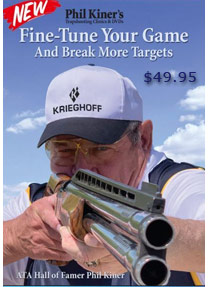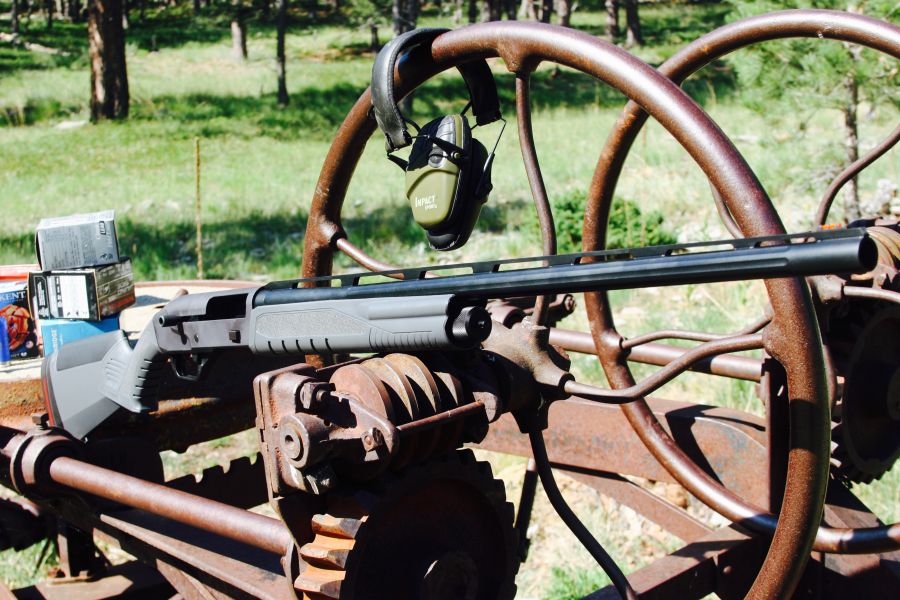
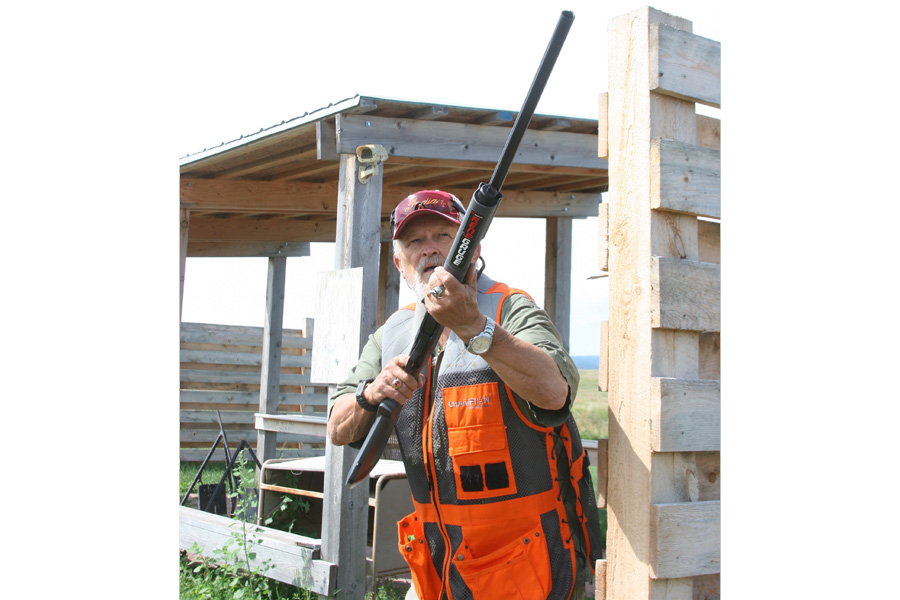
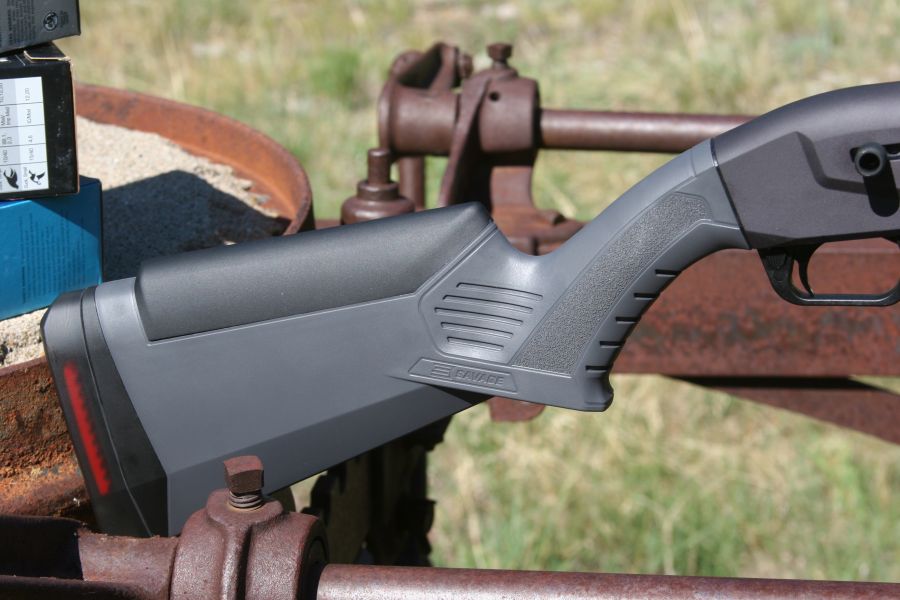
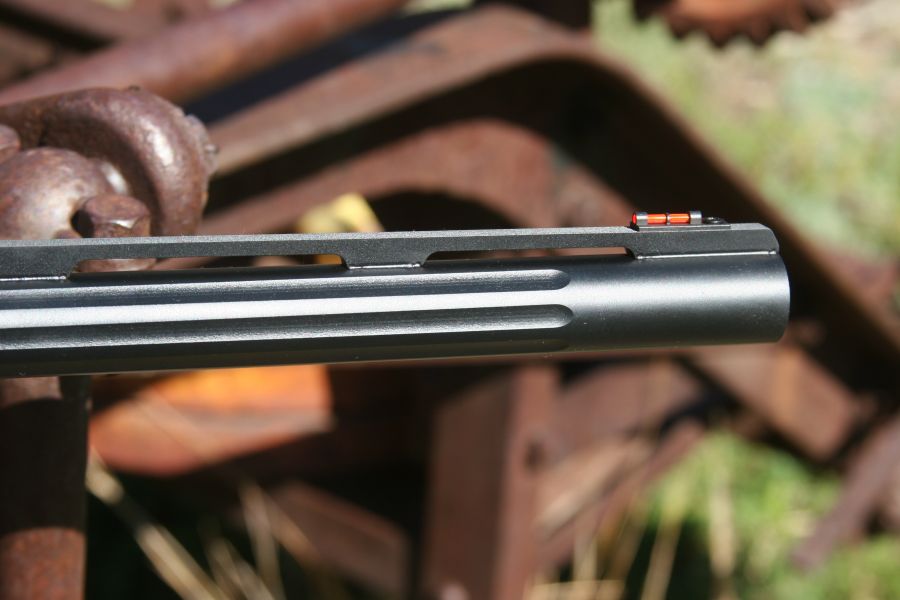
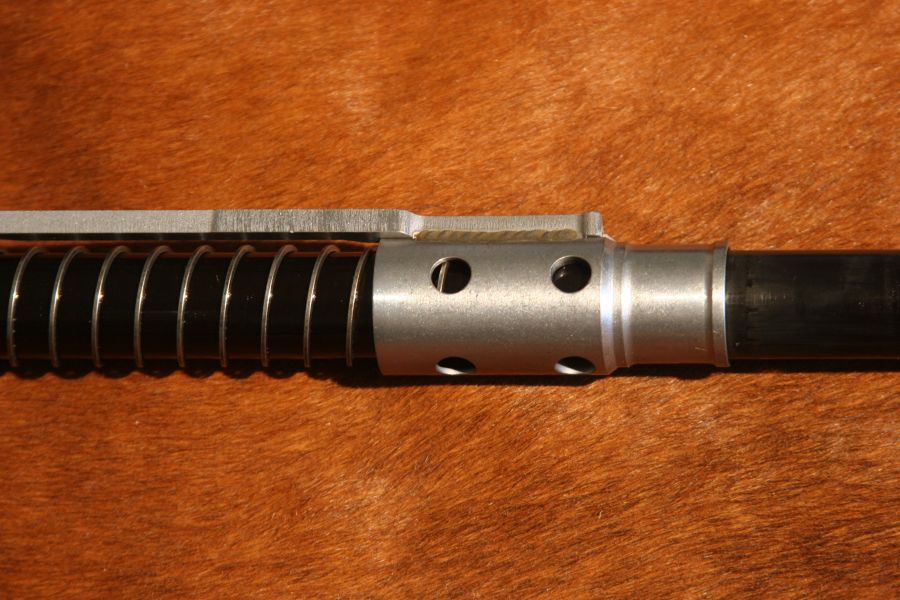
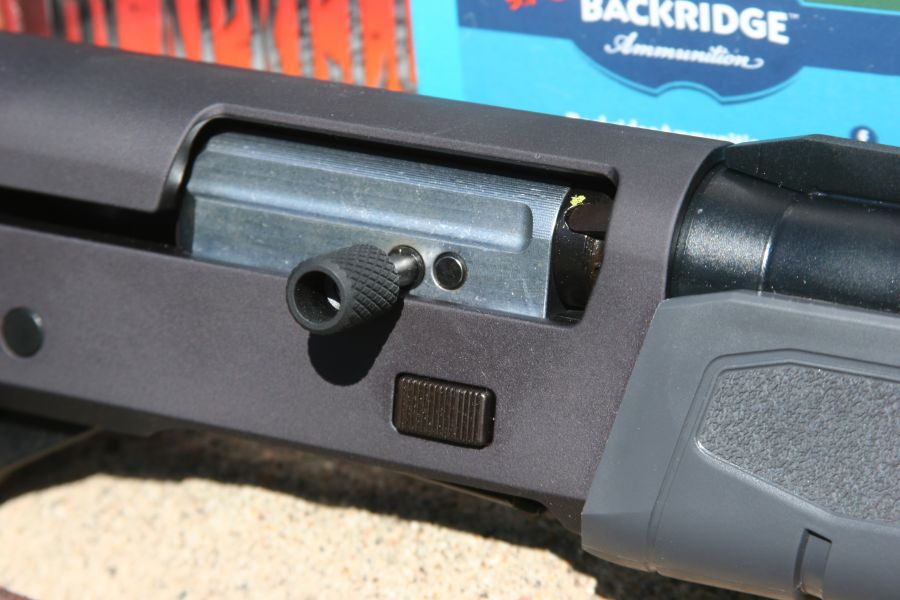
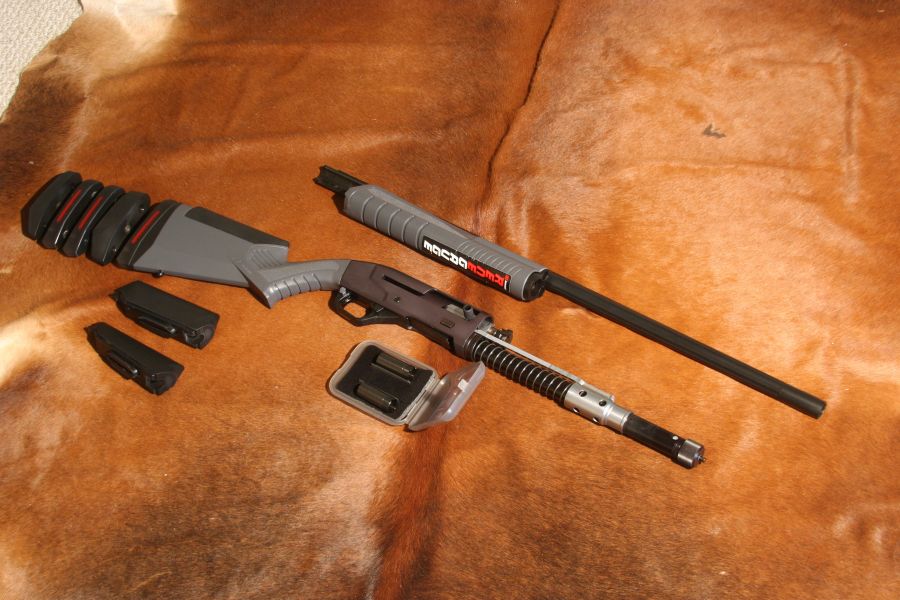
Savage Arms introduced its first semi-automatic shotgun, and it’s a dandy.
At a time when I thought Savage Arms was as rock solid as can be, to my surprise I learn the company was sold to a couple of independent buyers who are now revamping the entire rifle and shotgun line. The new owners acquired a manufacturing company that had just completely retooled the firearm production floor. Now with brand new equipment, tighter tolerances, fit and finish, capabilities are better than ever. Savage Arms has tasked me to review an example of the new Savage Arms Renegauge semi-auto loading shotgun.
The Renegauge is a semi-automatic 12 gauge with a new design of a gas-operating system that makes use of twin relief valves. This system is called the D.R.I.V., short for Dual Regulating Inline Valve. The new Renegauge will function and cycle with any load you wish to use, from clay target loads at 2¾-drams eq., 3-drams eq., 2¾” standard or magnum field loads or 3″ magnum field loads. I tested 29 different loads ranging from magnums to trap and specialized low-sound ammunition (metrogun.com) without a single failure, (See Table A). The gun’s functioning throughout the load range tested is so good I intend to list it on my website regarding approved Metro Gun sub-sonic ammunition and shotguns. This is an absolute first. No autoloading shotgun over the past 25 years of production of my Metro Gun System has ever produced totally perfect functioning with low-energy shotshell loads. Now with the new Savage Renegauge, all that has changed.
This shotgun is hunter-friendly in that it retains oversized operating control surfaces, the basic operating and functioning of the Benelli shotguns, but with its proprietary gas system. The Renegauge also makes use of the ubiquitous Beretta Mobil® choke system of which most folks are familiar. Loading extra rounds into the magazine tube is fast and simple. Load a round into the chamber by means of a small lever on the right side just ahead of the trigger guard.
Press the bolt release, and the bolt slams shut on a chambered round. You can fire and feed this gun without taking your eyes off the incoming targets. The gun is a waterfowl hunter’s dream. In terms of working weight, the 7½ lb. empty gun is a handful, but not like most autoloaders in the 12-gauge family of shotguns. Walking a cornfield for ringnecks or jump shooting waterfowl off western stock ponds could be a bit taxing on an older hunter. However, as this shotgun will also be coming your way in a nice 20-gauge 3″ model, some of those concerns could be going away fast.
Savage Arms over the years has attempted to come up with a reliable 12-gauge autoloader, but it was always too heavy and the bugaboo, reliability, got in the way. Obviously, they have solved the problem of the reliable gas system and a decent weight range. When the Renegauge becomes available in a 20 gauge, this rascal should be flying off the dealers’ shelves. The new Savage Arms Renegauge is in the higher-end market regarding price because of its bank-vault tight receiver construction and materials. Also, it is built around the space-age gas-control system previously illustrated.
Downrange
Talk mechanics all you want, but range time on a gun is everything, and at those times never-before-seen problems or issues can arise. First up, the Savage Arms Renegauge went to my range and was tasked to take clay birds off my trap paired up with a spring-powered clays thrower. Getting the feel for the gun on a moving target was my only objective.
Also, I wanted to get that special gas valve as fouled up as possible. My objective was to find its failing point regarding this special do-it-all valve system. Selected for the clays testing was the new Kent “Low Recoil ELITE” training and suppressor loads, as well as the new Backridge Ammunition Steel Shot “Sub-Sonic” loads. In the heavies, I went to Federal’s 3″ magnum waterfowl #3 steel. Being the chokes are standard Beretta Mobil® chokes which most shooters are familiar with, I figure it will be easy to set this shotgun up for specialized long-range turkey hunting or even as a predator-control shotgun when calling in coyotes. Using scopes or red dot sights, the additional insert high comb sections could be a solid advantage.
Upon your first peek at the new Savage Arms Renegauge, you could understandably think of it to be a competition clay target shotgun. With all the features generally seen on more-dedicated clay target guns, it would be easy to think of it as a clay-target shotgun. Although I feel the Renegauge is a field-model hunting gun, I am sure the target guns will follow in good time. The Savage Arms Renegauge shotgun also has a first in my book. The barrel on the Renegauge is fluted just like some higher-grade high-power rifles. This feature is not to reduce heat as it is in rifles, but to reduce weight of the gun.
Shooting clays I had to hold the shotgun with my right hand along my shoulder and pull the release cord with my left hand since I was shooting alone. This meant at the release of the bird I had to bring the gun into my shoulder, pick up the forend with my left hand and arm, then acquire the moving-target picture. This shotgun retains balance that is a bit muzzle heavy, and that worked just right for me when getting into the correct position to fire as a one-arm shooter.
Cleaning Out the Barn
I had heard of a local ranch lady who wanted some starlings removed from the low Dutch-style barns on her premises. The shooting would be close range, as the birds constantly cross-cut over and around the place. I decided to stay with my Federal Top Gun Sub-Sonic Metro Gun Loads, Kent’s ELITE Low Recoil and also continued work with the new Backridge Steel Shot Sub-Sonic ammo as well.
Using the same basic methods (less some decoys) that I have used for years in Minnesota during our summer shoots, I filled my cargo pockets with shells, sat back against the barn wall and waited out my targets. Even with an early start, the summer days on the Dakota prairie can be quite warm. I managed to clear the sky of a few nasty flying barn rats before they caught on to me and slid off to one side just out of my gunning range.
Recoil with light loads was having virtually no effect on my shoulder. Heavier fodder tended to buck a bit, but the gas system on this shotgun and the various exchangeable recoil pads helped considerably. This shotgun retains a special exterior and interior coating called Melonite. Over several weeks of field use and hauling the shotgun around in a Dakota pickup truck without a case, the shotgun still looked great.
All of the reciprocating components in the shotgun are heavy chrome-plated. The action bar is a one-piece unit, and a fiber optic sight is installed at the muzzle. According to my sources at Savage Arms, this shotgun in the standard gray/black color scheme will be offered in 24″, 26″ and 28″ barrel lengths. These will be in the future with no known scheduled time frame for the availability as of now. Currently, only the 28″ is offered. The shotgun is also going to be available in camo patterns as well.
I believe the Renegauge should be offered with two additional chokes. The first should be in an Improved Modified and the second in a heavy Extra-Full. Even the field shooting I was doing was at times a perfect fit for the Improved Modified choke in that the smaller shot sizes would have allowed for a greater pattern spread.
The MSRP on the Savage Arms Renegauge shotgun will retail at $1,449. SS
L.P. Brezny has worked in research and development in the shooting industry for 40 years. He developed and marketed the first sub-sonic shotgun and shotshell — The Hastings Metro Gun™ System (www.metrogun.com or 605-787-6321) — and was the first to measure shotshell pellets in real time at target distances, building ballistic tables demonstrating shotshell load performance and chronographing systems that are still in use today. He also developed the Dead Ringer® high-performance waterfowl/upland choke-tube system. L.P. has been writing for various shooting publications for over 35 years.
Performance Table A
Load Ejection Recoil Pattern 40 yards
(Full choke used on all loads)
Kent Cartridge Upland Steel 2 3/4″, 1 1/8 oz. #6 No failures light 78% Avg
Eley Buckholt (buckshot) 65mm 2 3/4″ No failures medium 88% 30 yards
Federal 3″ Magnum upland 1 7/8 oz. #6 lead shot No failures stiff/manageable 79% 40 yards
Backridge 2 3/4″, 1 oz. #2 steel Metro Gun Load No failures super light/0 91% 35 yards
Federal 2 3/4″, 1 1/8 oz. #7½ Metro Gun Loads No failures 0 recoil 87% 35 yards
Federal 3″ Black Cloud #4 steel 1 1/8 oz. No failures medium/heavy 90% 40 yards
Winchester Supreme Xtended 3″, 1 3/8 oz. #2 steel No failures heavy 92% 40 yards
Backridge 2 3/4″, 1¼ oz. #6 ITX No failures light 79% 40 yards
Winchester Blind Side 3″, 1 3/8 oz. #2 steel No failures Heavy N/A
Kent 2 3/4″, 7/8 oz. Elite #8 lead No failures 0 recoil N/A
Remington 3″ SP 1 3/8 oz. BBBX1 Duplex Steel No failures medium N/A
Winchester 2 3/4″ Xpert 1 1/16 oz. #2 steel No failures medium 84% 40 yards
Trutracer 1 1/8 oz. 7½ lead & tracer element No failures low/medium N/A
Winchester AA 2 3/4″, 1 1/8 oz. #8 lead No failures low N/A
Federal 3″ “Meateater” Bismuth 1 3/8 oz. #5 No failures medium/heavy 76% 40 yards
Federal 2 3/4″ Top Gun Sporting 1 oz. 7½ No failures 0 recoil 94% 30 yards
(Note: Shotgun not offered in 3.5″ Magnum)
Savage Arms RENEGAUGE Specs
Action: Semi-Auto
Barrel Color: Black
Barrel Finish: Melonite
Barrel Length (inches): 28
Barrel Material: Carbon Steel
Caliber: 12 Gauge, 2 3/4″ and 3″ shotshells
Magazine Capacity: 4+1 (2 3/4″)
Length of Pull (inches): 14.25-15.07
Magazine: Tube
Overall Length (inches): 49.5
Receiver Color: Black
Receiver Finish: Matte
Receiver Material: Aluminum
Stock Material: Synthetic
Stock Type: Monte Carlo Style
Weight (lbs.): 7.8 to 8


